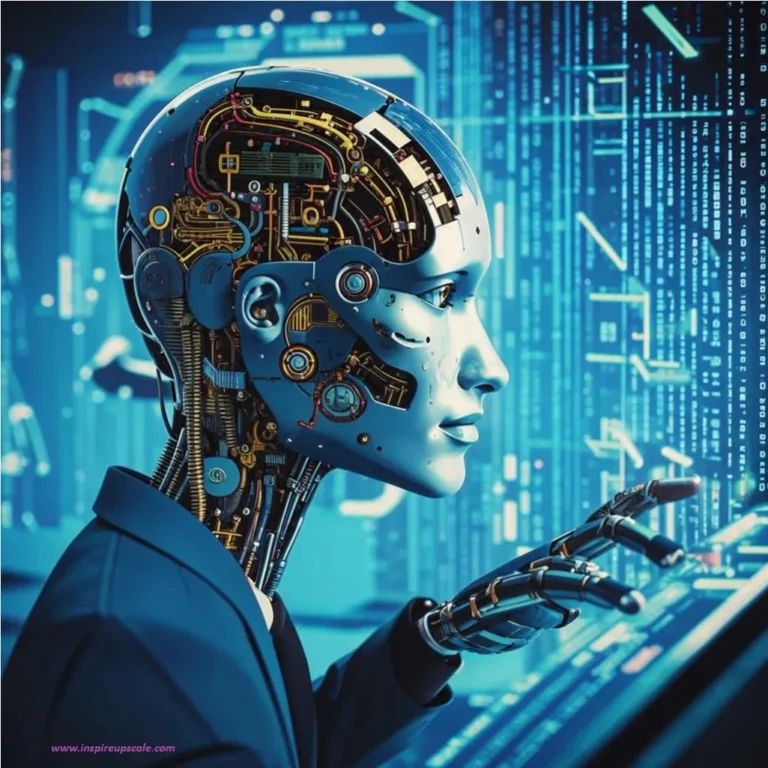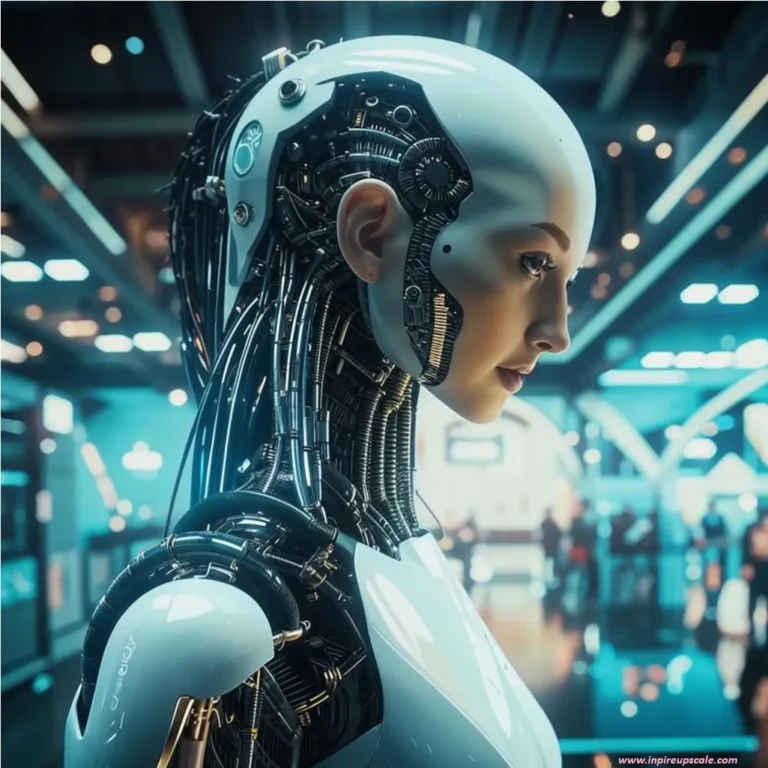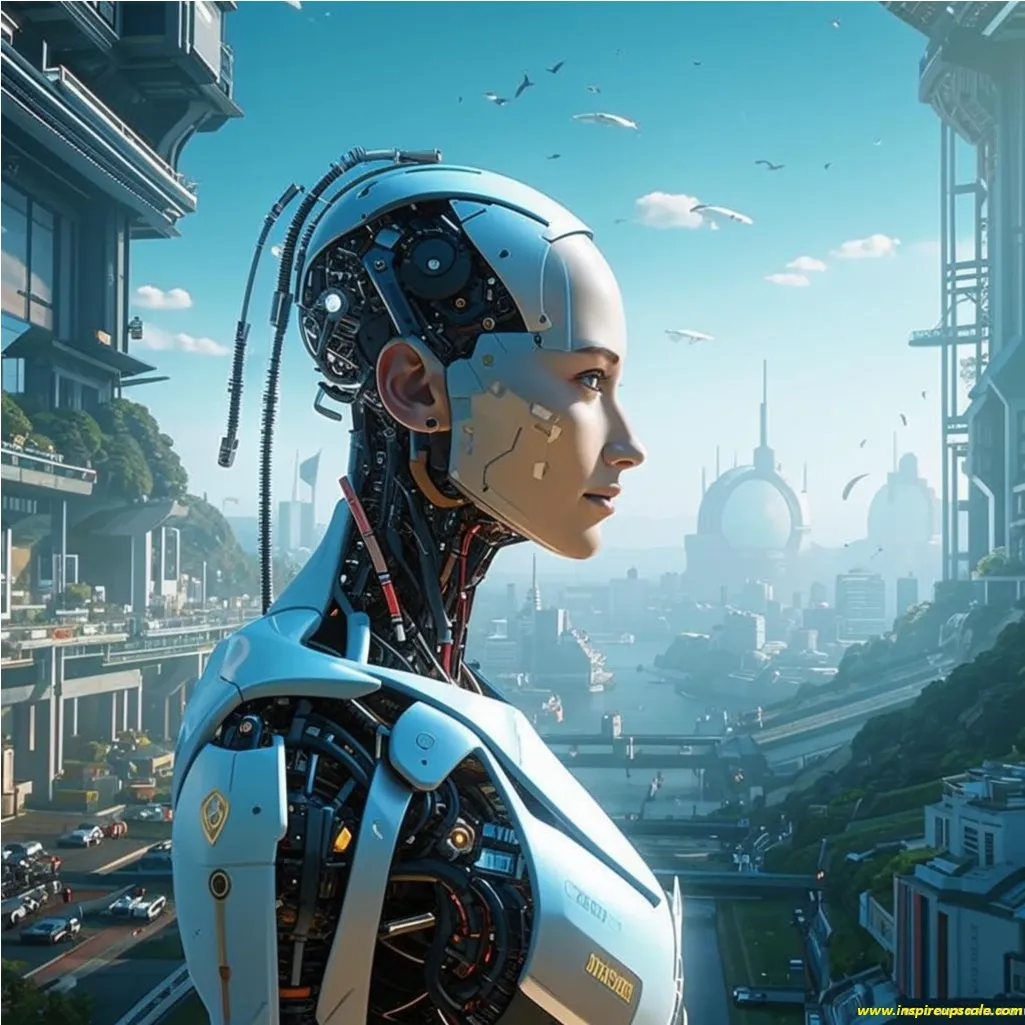Introduction to AI Automation:
🚀 Imagine a world where machines learn, adapt, and execute tasks with precision—freeing humans to innovate. This is the promise of AI automation, a groundbreaking fusion of artificial intelligence (AI) and automation technologies that enables systems to operate autonomously, learn from data, and make decisions with minimal human intervention. By 2025, the global AI market is projected to soar to $190 billion, fueled by advancements in machine learning, cloud computing, and the relentless pursuit of efficiency across industries.
What Makes AI Automation Transformative?
Traditional automation relies on pre-programmed rules to perform repetitive tasks, such as assembly line robotics. AI automation, however, adds a layer of cognitive intelligence, allowing systems to analyze data, recognize patterns, and improve over time. For example, an AI-powered robot in manufacturing doesn’t just weld parts—it uses computer vision to detect defects and adjusts its actions in real-time. This shift from “doing” to “thinking and doing” is redefining productivity.
Real-World Applications Driving Change
📊 Let’s explore how AI automation is already reshaping key sectors:
Healthcare: AI algorithms analyze medical images with 99% accuracy, outperforming human radiologists in detecting early-stage cancers. Startups like PathAI leverage machine learning to revolutionize pathology, reducing diagnostic errors by 85%.
Retail: Giants like Amazon use AI-driven dynamic pricing tools to adjust product prices in real-time based on demand, competition, and inventory. Personalized recommendation engines (think Spotify or Netflix) now drive 35% of total sales for e-commerce platforms.
Manufacturing: Siemens employs AI-powered predictive maintenance to forecast equipment failures 3 weeks in advance, slashing downtime by 20% and saving millions annually.
Why Businesses Can’t Afford to Ignore AI Automation
Companies adopting AI automation report 30–50% faster decision-making and 25% higher operational efficiency, according to McKinsey. For instance, Unilever uses AI chatbots to handle 60% of HR queries, allowing staff to focus on strategic tasks. However, success hinges on understanding its nuances—deploying AI isn’t just about technology but aligning it with business goals, ethics, and workforce readiness.
The Road Ahead
While AI automation offers immense potential, challenges like data privacy, algorithmic bias, and workforce adaptation loom large. A 2023 IBM study reveals that 42% of CEOs cite employee reskilling as their top AI-related hurdle. Organizations must prioritize transparent AI governance and foster a culture of continuous learning to thrive.
💡 Did You Know?
AI automation could boost global GDP by $15.7 trillion by 2030 (PwC).
74% of enterprises now pilot AI automation in at least one business function (Gartner).
As industries race to harness this technology, one truth is clear: AI automation isn’t just a tool—it’s the cornerstone of the next industrial revolution. Stay tuned as we unpack its key concepts, benefits, and ethical implications in the sections ahead!

Key Concepts of AI Automation
1. Robotic Process Automation (RPA): The Rule-Based Workhorse
RPA uses software “bots” to automate repetitive, rule-based tasks like data entry, invoice processing, or payroll management. These bots follow predefined workflows, making them ideal for structured processes.
Example: Insurance companies use RPA to process claims 10x faster by extracting data from forms and updating databases.
Limitation: RPA lacks adaptability—it can’t handle unexpected scenarios without human intervention.
2. Machine Learning (ML): The Brain Behind Adaptive Automation
ML algorithms analyze vast datasets to identify patterns, make predictions, and improve decisions over time. Unlike RPA, ML thrives in dynamic environments.
Example: PayPal’s ML models detect fraudulent transactions with 99.9% accuracy, saving $700 million annually.
Key Strength: Self-improvement—the more data ML systems process, the smarter they become.
3. Natural Language Processing (NLP): Bridging Human-Machine Communication
NLP enables machines to understand, interpret, and respond to human language. From chatbots to sentiment analysis, NLP powers intuitive interactions.
Example: Google’s BERT algorithm improves search results by grasping context in user queries.
Innovation: Emotion-aware AI (e.g., Affectiva) detects user frustration in customer service calls and escalates issues.
Traditional Automation vs. AI Automation: A Paradigm Shift
| Aspect | Traditional Automation | AI Automation |
|---|---|---|
| Decision-Making | Follows fixed rules | Learns and adapts in real-time |
| Data Dependency | Requires structured data | Works with unstructured data |
| Flexibility | Rigid workflows | Dynamic problem-solving |
| Use Case | Processing invoices | Predicting supply chain disruptions |
🌟 Why It Matters: While traditional automation executes, AI automation innovates. For instance, a traditional system might flag an unusual expense, but an AI system could predict budget overruns by analyzing spending trends, market conditions, and historical data.
Convergence: The Rise of Hyperautomation
Gartner predicts that by 2024, hyperautomation—combining RPA, ML, NLP, and process mining—will reduce operational costs by 30%. Imagine an e-commerce company using:
RPA to update inventory,
ML to forecast demand surges,
NLP to resolve customer complaints via chatbots.
This integration eliminates silos, creating end-to-end automation that’s faster, smarter, and more resilient.
The Bottom Line
AI automation isn’t about replacing humans—it’s about augmenting human capabilities. While RPA handles the “grunt work,” ML and NLP tackle complex tasks that require reasoning and creativity. As these technologies mature, businesses that master their synergy will lead the innovation race.
🔍 Up Next: How is this tech delivering real-world ROI? Let’s explore the benefits of AI automation—and the hurdles to avoid.
Recommended For You:
Machine Learning and Its Benefits In 21 Century

Benefits of AI Automation: Driving Efficiency, Savings, and Growth
🚀 AI automation isn’t just a buzzword—it’s a game-changer reshaping how businesses operate, compete, and innovate. By merging intelligence with automation, companies unlock unprecedented advantages, from slashing costs to scaling operations effortlessly. Let’s explore the transformative benefits fueling its global adoption:
1. ⚡ Supercharged Efficiency
AI automation tackles repetitive, time-consuming tasks, freeing employees to focus on high-value work.
Example: JP Morgan’s COiN platform analyzes 12,000 legal documents in seconds—a task that once took 360,000 human hours annually.
Broader Impact: In healthcare, Olive AI automates claims processing, reducing administrative workload by 50% and cutting patient wait times.
Stat: Businesses using AI report 40% faster task completion (Accenture), boosting productivity across sectors like finance, logistics, and customer service.
2. 💰 Dramatic Cost Savings
By minimizing human error and optimizing resources, AI automation reduces operational costs by 30–50%.
Retail: Walmart’s AI-driven inventory system predicts demand with 95% accuracy, reducing overstock waste by 15% and saving $1 billion yearly.
Manufacturing: General Electric uses AI for predictive maintenance, cutting unplanned downtime costs by 25%.
Energy: Google’s DeepMind AI slashed data center cooling bills by 40% through real-time energy optimization.
3. 📈 Seamless Scalability
AI effortlessly handles workload spikes without hiring surges, making it ideal for dynamic industries.
Customer Service: AI chatbots like Amtrak’s “Julie” manage 10,000+ queries/hour, resolving 85% of issues without human agents.
E-Commerce: During Black Friday, Shopify’s AI scales order processing by 200%, ensuring smooth operations despite traffic surges.
Cloud Integration: AWS’s AI tools auto-scale resources based on demand, enabling startups to compete with enterprise giants.
4. 🎯 Enhanced Customer Experience
AI personalization drives engagement and loyalty.
Case Study – Netflix: Its recommendation engine, powered by ML, automates 80% of content choices, leading to 90% viewer retention and $1 billion/year in reduced churn.
Finance: Bank of America’s AI chatbot “Erica” provides personalized financial advice, handling 50 million client requests annually.
5. 🌱 Innovation Acceleration
With mundane tasks automated, teams innovate faster.
Pharma: Pfizer uses AI to analyze clinical trial data, shortening drug development cycles by 30%.
Marketing: Unilever’s AI copywriting tools generate 1,000+ ad variants in minutes, boosting campaign ROI by 20%.
The Bottom Line
AI automation isn’t just about cutting costs—it’s about reimagining possibilities. Companies that adopt it gain agility, resilience, and a competitive edge in fast-moving markets.
🔜 Next Up: While the rewards are immense, AI automation isn’t without hurdles. Let’s tackle the challenges and ethical considerations businesses must navigate.

Challenges and Ethical Considerations of AI Automation:
⚠️ While AI automation unlocks transformative potential, its adoption is fraught with risks that demand careful navigation. From workforce disruption to entrenched biases, businesses and societies must address these challenges to harness AI responsibly.
1. Job Displacement: The Looming Workforce Crisis
The World Economic Forum predicts 85 million jobs could vanish by 2025, primarily in roles involving repetitive tasks like manufacturing, data entry, and customer service. For instance, self-checkout systems have reduced retail staffing needs by 30% in the U.S., while AI-driven truck platooning threatens 1.7 million trucking jobs. However, it’s not all doom and gloom: 97 million new roles in AI governance, data science, and human-AI collaboration are expected to emerge. The challenge lies in reskilling workers—only 42% of companies currently invest in upskilling programs (McKinsey), leaving vulnerable populations at risk.
2. Bias: When AI Amplifies Inequality
AI systems often mirror societal biases due to flawed training data. A landmark MIT study found facial recognition tools error rates are 35% higher for darker-skinned individuals, leading to wrongful arrests and discriminatory surveillance. In 2018, Amazon scrapped an AI hiring tool that downgraded resumes containing words like “women’s” (e.g., “women’s chess club”). Such biases permeate critical sectors:
Healthcare: Algorithms prioritizing white patients for kidney transplants.
Finance: Loan approval systems disadvantaging minority applicants.
3. Data Privacy: The Trust Deficit
With AI systems consuming vast personal data, 62% of consumers fear misuse (Pew Research). High-profile breaches, like the 2023 ChatGPT leak exposing user conversations, underscore these risks. While regulations like the EU’s GDPR aim to protect privacy, enforcement remains inconsistent globally. For example, AI-powered surveillance tools in authoritarian regimes track dissenters, chilling free expression.
Balancing Pros and Cons: The Ethical Tightrope
| Pros | Cons |
|---|---|
| 24/7 productivity | Job loss in low-skill roles |
| 50% error reduction | Bias in decision-making |
| Faster innovation cycles | Data exploitation risks |
Solutions: Building a Fairer AI Future
Reskilling Initiatives: IBM’s “SkillsBuild” trains 30 million workers by 2030 in AI literacy and digital skills.
Transparency Frameworks: Tools like IBM’s AI Fairness 360 audit algorithms for bias, while the EU’s AI Act mandates ethical risk assessments.
Privacy-by-Design: Apple’s on-device AI processing ensures data never leaves users’ phones, balancing utility with privacy.
The Path Forward
AI’s ethical challenges aren’t roadblocks—they’re calls to action. By prioritizing equity, transparency, and worker empowerment, businesses can turn risks into opportunities for inclusive growth.
🔜 Next: What’s on the horizon? Explore future trends shaping AI automation’s evolution—from hyperautomation to AI ethics laws.

Future Trends in AI Automation:
🚀 The future of AI automation isn’t just about smarter machines—it’s about creating interconnected, ethical, and inclusive systems that redefine industries. By 2030, AI could inject $15.7 trillion into the global economy (PwC), driven by breakthroughs like hyperautomation, human-AI symbiosis, and democratized access. Let’s unpack the trends shaping this evolution:
1. 🌐 Hyperautomation: The Endgame of Efficiency
Hyperautomation integrates AI, RPA, IoT, and process mining to automate entire workflows, not just tasks.
Example: A smart factory uses IoT sensors to monitor equipment, RPA bots to order repairs, and AI to optimize production schedules—all without human input.
Impact: Gartner predicts hyperautomation will slash operational costs by 30% by 2024, with sectors like logistics and healthcare leading adoption.
2. 🤖 AI-Human Collaboration: Rise of the Cobots
Collaborative robots (cobots) are designed to work alongside humans, enhancing safety and productivity.
Manufacturing: BMW’s cobots handle 90% of heavy lifting, reducing worker injuries by 50%.
Healthcare: OpenAI’s ChatGPT-4 assists doctors in diagnosing rare diseases, cutting diagnosis time by 40%.
Stat: The cobot market will hit $18 billion by 2030 (ABI Research), driven by advances in computer vision and natural language processing.
3. ⚖️ Ethical AI Governance: Rules of the Road
As AI’s influence grows, so does scrutiny. The EU’s AI Act (2024) classifies AI systems by risk, banning unethical uses like social scoring.
Global Momentum: 65+ countries are drafting AI ethics laws, while tools like IBM’s AI Fairness 360 help audit algorithms for bias.
Corporate Shift: Microsoft’s Responsible AI Standard mandates transparency reports, setting a benchmark for accountability.
4. 🌍 Democratization: AI for All
Cloud platforms like AWS, Google AI, and Azure are making AI accessible to SMEs.
Success Story: Chilean startup NotCo uses Google’s AutoML to create plant-based foods, reducing R&D costs by 70%.
Stat: 48% of SMEs now use AI tools for tasks like marketing analytics and inventory management (Salesforce).
5. 🌟 Economic Transformation: Sectors Poised for Disruption
| Sector | AI Impact |
|---|---|
| Healthcare | AI-driven drug discovery ($50B market by 2027) |
| Agriculture | Precision farming to boost yields by 25% |
| Energy | AI-optimized grids cutting emissions by 20% |
The Road Ahead
The future of AI automation hinges on balancing innovation with responsibility. Companies that embrace hyperautomation while prioritizing ethics and workforce inclusivity will dominate their markets.
🔜 Next: Ready to act? Our conclusion reveals how to start your AI automation journey—without the pitfalls.

Conclusion: Embracing AI Automation
AI automation is no longer a futuristic concept but a strategic necessity for businesses aiming to thrive in a hyper-competitive, rapidly evolving landscape. By 2030, AI is projected to contribute $15.7 trillion to the global economy (PwC), underscoring its transformative potential. Companies that delay adoption risk obsolescence, as early adopters like Netflix and Walmart demonstrate: Netflix’s AI-driven recommendations drive 90% viewer engagement, while Walmart’s AI-powered inventory systems slash waste by 15%, saving billions annually.
However, harnessing AI’s full potential demands a balance between innovation and ethics. While automation boosts efficiency and scalability, ethical pitfalls—such as bias in facial recognition or data privacy breaches—require vigilant governance. Regulations like the EU’s AI Act set critical benchmarks, mandating transparency and accountability. Businesses must prioritize ethical frameworks, ensuring AI systems are fair, explainable, and compliant with standards like GDPR.
Starting small is key. Pilot AI tools in low-risk areas, such as chatbots for customer service or RPA for invoice processing, to test feasibility and ROI. For instance, JP Morgan’s COiN platform automates legal document review, saving 360,000 human hours yearly. These pilots provide actionable insights, build stakeholder confidence, and pave the way for scalable implementation.
Upskilling teams is equally vital. With 85 million jobs potentially displaced by 2025 (World Economic Forum), investing in AI literacy and reskilling programs transforms workforce vulnerability into opportunity. IBM’s “SkillsBuild” initiative, training 30 million workers by 2030, exemplifies how bridging the skills gap fosters a culture of innovation and prepares employees for roles in AI oversight and human-AI collaboration.
Compliance cannot be an afterthought. Regular audits of AI systems, guided by tools like IBM’s AI Fairness 360, ensure alignment with ethical and legal standards. Meanwhile, cloud platforms like AWS democratize access, enabling SMEs to leverage AI without hefty upfront costs.
🚀 Your Next Step: Audit Workflows Today!
Begin by mapping processes to identify automation hotspots—repetitive tasks, data-rich operations, or customer touchpoints. Use process mining tools or consult AI experts to prioritize high-impact areas. For example, a retail audit might reveal that AI-driven demand forecasting could reduce stockouts by 30%.
The future belongs to businesses that view AI automation not as a threat but as a catalyst for reinvention. By blending innovation with responsibility, organizations can unlock unprecedented growth, agility, and resilience. The question isn’t if to adopt AI, but how swiftly you can act.
Act now—audit, pilot, and scale—to turn AI’s promise into your competitive advantage.


